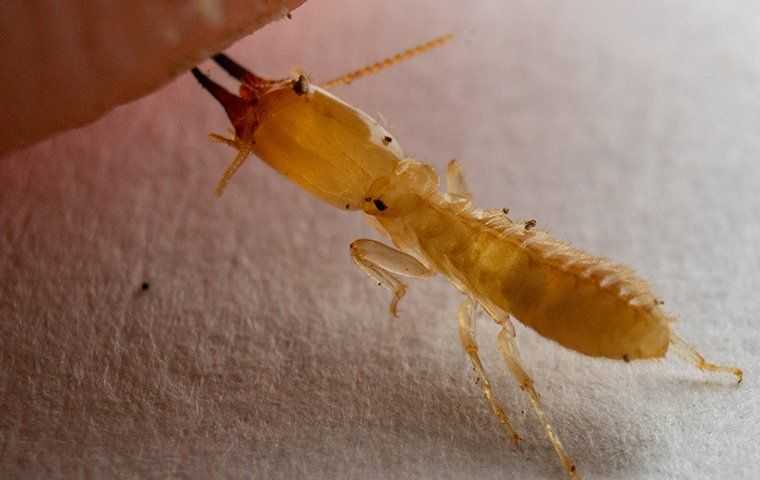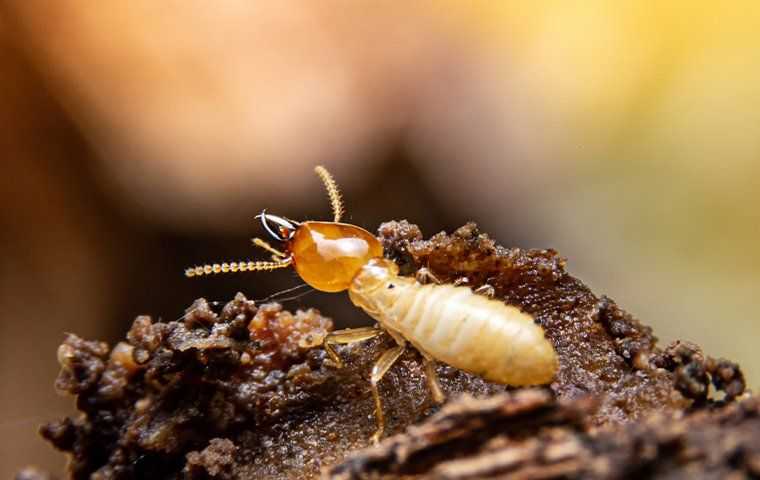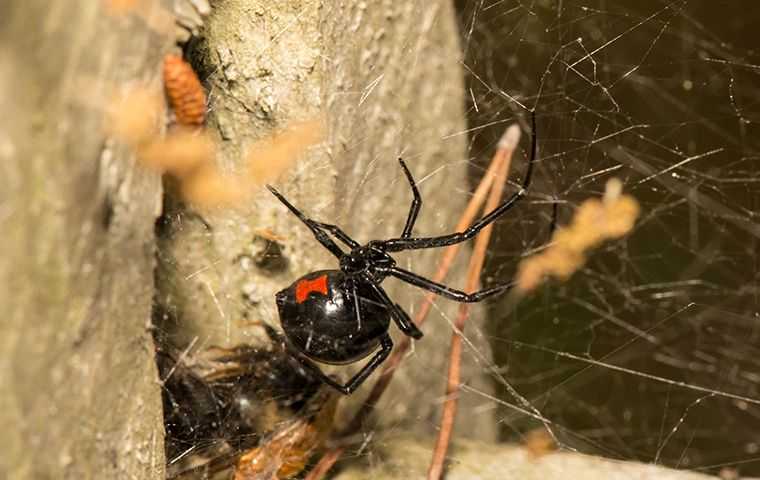Homeowners in Orange County know the value of a serene and safe living space. But what happens when these peaceful havens come under the threat of termites? These tiny invaders are a serious concern for property integrity and value.
In this comprehensive guide from HomeShield Pest Control, we'll dive into the critical topic of termite removal in Orange County. From understanding what draws these pests to your home to exploring professional solutions, we're here to help you navigate the journey of termite-proofing your property.
Whether you're facing an active infestation or just want to prepare for one, our insights will help you protect your home against these unwelcome guests
What Is A Termite Swarmer?
When it comes to protecting your home from termites in Orange County, knowledge is your first line of defense. A crucial aspect is understanding the nature of termite swarmers, especially when they appear on your property. These are not just regular termites; they are potential founders of new colonies, and seeing them can be an early warning of a more significant problem. Let's explore the unique characteristics and implications of winged termite swarmers on your Orange County property.
Recognizing Termite Swarmers
Termite swarmers, or alates, are the reproductive members of the termite colony. They are distinct from their worker and soldier counterparts, primarily due to their wings. These termites are typically larger and more visible, making their identification crucial for homeowners. They emerge in large numbers, usually in the spring, signaling a mature colony nearby. Swarmers inside your home often indicate an existing infestation, while seeing them outside can hint at potential risks.
The Swarming Process
Understanding the swarming process can give you insights into the termite life cycle and how infestations start. After emerging, swarmers fly out to find mates and establish new colonies; this is the only time termites are airborne. The swarming event is brief, often lasting just a few minutes. Afterward, the termites shed their wings and, if successful, start a new colony. Finding discarded wings around your home is a telltale sign of swarmers having been present.
Distinguishing Swarmers
It's easy to confuse termite swarmers with other winged insects like flying ants. However, there are key differences. Termite swarmers have two pairs of wings of equal length, a straight waist, and straight antennae. In contrast, flying ants have uneven wings, a pinched waist, and elbowed antennae. Correctly identifying these pests is crucial for the right pest control strategy.
The Implications of Swarmers
The appearance of winged termite swarmers indicates a potential or existing termite problem. Swarmers are the sign of a mature colony, which means significant unseen damage to your home could occur. Immediate attention is necessary to assess and address any potential termite activity.
Next Steps
If you spot termite swarmers, it's essential to take prompt action:
Collect a sample of the insect for professional identification.
Inspect your property for other signs of termite activity.
Contact a termite control professional for a thorough evaluation.
Remember, while identifying swarmers is a step in the right direction, effective termite control often requires professional intervention. Our termite experts at HomeShield Pest Control can determine the extent of the problem and suggest the best course of action for treatment and prevention.

The Extent Of Damage Termites Can Create In Your Home
Termites are often out of sight, but their impact on your home can be extensive and costly. Understanding the extent of damage these pests can cause is vital for every homeowner. Let's look at the various ways termites can compromise the integrity of your home.
Unseen Destruction
Termites work quietly and often go unnoticed until they've done significant damage. They primarily feed on wood, but harm to wooden structures isn't the only damage they do. Termites can also damage paper, insulation, and even swimming pool liners and filtration systems. Their ability to weaken the structural integrity of a house is what makes them particularly menacing.
Typical areas of termite damage are:
Wooden Structures: These structures include beams, studs, and flooring. Termites can hollow out wood, leaving it structurally unsound.
Drywall: Termites can eat through drywall, leaving behind tiny pinholes or more significant damage.
Foundation: Some species of termites can damage your home's foundation, especially if it is wood.
Furniture: Wooden furniture is also at risk, which can lead to costly replacements.
Landscaping: Termites can damage trees and shrubs, impacting your home's curb appeal and landscape health.
Identifying Evidence of Termite Damage
Spotting evidence of termite damage early on can save you from extensive repairs. Some signs to look out for include the following:
Hollow-sounding wood
Cracks or bubbling in paint or wallpaper
Mud tubes on exterior walls (used by termites to travel)
Frass (termite droppings) resembling sawdust near wooden structures
Sagging floors or ceilings that indicate structural weakness
Financial and Emotional Toll
The impact of termite damage isn't just physical; it can also be financial and emotional. Repairing termite damage can be expensive and often not covered by standard homeowners insurance. Moreover, the emotional stress of dealing with an infestation and the aftermath can be overwhelming for many homeowners.
Proactive Measures
To protect your home from damage, you should take proactive measures:
Have pest control professionals conduct regular inspections.
Reduce the moisture around your home's foundation.
Keep woodpiles and debris away from your home's exterior.
Ensure proper ventilation in crawl spaces and attics.
While termites are a silent threat, you can mitigate their damage with vigilance and professional assistance. If you suspect termites in your home, don't hesitate to reach out to HomeShield Pest Control to assess and address the problem effectively.
Why Do-It-Yourself Termite Control Fails
In the era of DIY solutions for almost everything, tackling termite control on your own might be tempting. However, when it comes to dealing with these complex pests, DIY methods often fall short, and understanding why can save homeowners from wasted effort and escalating damage. Let's explore the challenges of self-managed termite control and the importance of professional expertise.
The Challenge of Accurate Identification
One of the critical steps in effective termite control is correctly identifying the pest. Termites come in various species, each requiring a different treatment approach. Mistaking them for other insects like ants or misidentifying the termite species can lead to ineffective treatment. Accurate termite identification requires expertise and experience, which most homeowners do not possess.
Limitations of Over-the-Counter Products
DIY termite treatments available in stores might seem like a cost-effective solution, but they have limitations:
Professional-grade products are often less potent.
They may provide only a temporary solution, failing to address the root of the infestation.
Incorrect application can pose health risks and may even worsen the termite problem.
Professionals can access more effective treatment methods than you can buy over the counter.
Risk of Incomplete Eradication
Termites are notorious for their ability to infiltrate homes deeply and inconspicuously. DIY methods often target visible termites or superficial signs of infestation. However, addressing the colony's core, including the queen, is necessary for the infestation to continue. Professional pest control services can thoroughly evaluate the extent of the infestation and apply comprehensive treatment strategies.
Overlooking Preventive Measures
Effective termite control isn't just about addressing current infestations but also preventing future ones. DIY efforts usually overlook this aspect. On the other hand, professionals can provide advice and treatments for long-term prevention, such as creating barriers against termites and addressing environmental factors that attract them.
Cost Implications of DIY Failures
While DIY termite control may seem cheaper initially, it can be more costly in the long run. Failed attempts can allow termites to continue causing damage, leading to more extensive and expensive repairs later. Investing in professional pest control is more cost-effective, offering a more reliable and lasting solution.
Treatment: How Professionals Get Rid Of Termites
Seeking professional help is often the best way to get rid of termites. Experts in termite control utilize a combination of advanced techniques and products tailored to the specific needs of your home and the type of termite infestation. Let's examine how professionals tackle termite problems effectively.
Targeted Treatment Strategies
Professionals start with thoroughly inspecting your property to identify the extent of the infestation and the termite species involved. Based on this assessment, they develop a targeted treatment plan, which may include:
Bait systems to eliminate colonies.
Treatments to create barriers around your home.
Direct wood treatments to address infestations in specific areas.
Targeted treatment strategies ensure that each termite problem is met with a precise, effective solution, safeguarding your home against these hidden invaders.
Long-Term Prevention
Beyond immediate eradication, professionals also focus on long-term prevention. They may recommend changes to reduce your home's vulnerability to future infestations and periodic follow-ups to ensure it remains termite-free.
At HomeShield Pest Control, we understand the stress and frustration of termite infestations. Our team can provide effective, environmentally conscious, and family-friendly services. We're here to safeguard your home against these destructive pests. If you're facing termite troubles, let us offer you peace of mind with our expert solutions. Contact us for the most reliable termite control services in Orange County.






















